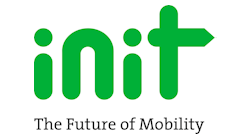Fare capping works by rewarding passengers with free rides after they meet the fare equivalent of a daily, weekly or monthly pass. With fare capping, social equity is achieved by removing upfront cost barriers associated with the recurrent passes. For example, if a single-ride ticket costs $3, and a daily pass costs $6, the rider earns a daily pass after two trips in the same day. For the rest of the day, they ride without paying any additional fares. Fare capping eliminates the upfront cash burden required for discounted passes.
Among the first cities in the world to introduce fare capping is Portland. The Portland-Vancouver Metro Area offers region-wide service by bus, light rail, commuter rail and streetcar. The services are offered through a multi-agency partnership between TriMet, the Portland Streetcar and neighboring Clark County Public Transit Benefit Area Authority (C-TRAN) in Vancouver, Washington.
A single regional bus trip on TriMet costs $2.50 for an adult, while a day pass costs $5.00. After accruing the equivalent of a day pass, the fare is capped at $5.00. Adult passengers paying for two trips in a day will not pay for the third or subsequent trip no matter how many times they ride. The same is true for the cost of a monthly pass.
Rhyan Schaub, TriMet’s director of Revenue Operations & Electronic Fares, says there are many benefits of fare capping.
“Fare capping introduces an equity-based incentive to frequent transit use. It eliminates the burdensome upfront cost of purchasing monthly passes, replacing it with smart, hassle-free, pay-as- you-go infrastructure,” said Schaub.
Fare capping relieves the rider of having to figure out the “right” fare, provides peace of mind that they are not paying too much and delivers an equitable option to riders - especially those who cannot afford the monthly pass fees.
Fare capping structures provide incentive and accessibility for all passengers. New mobility providers along with the multiple transportation options today give riders even more benefits for riding public transit.
If the goal is to make transit more accessible to all, the result means we can reduce our carbon footprint and earn some extra dough in the process. That’s a win-win for everyone.




